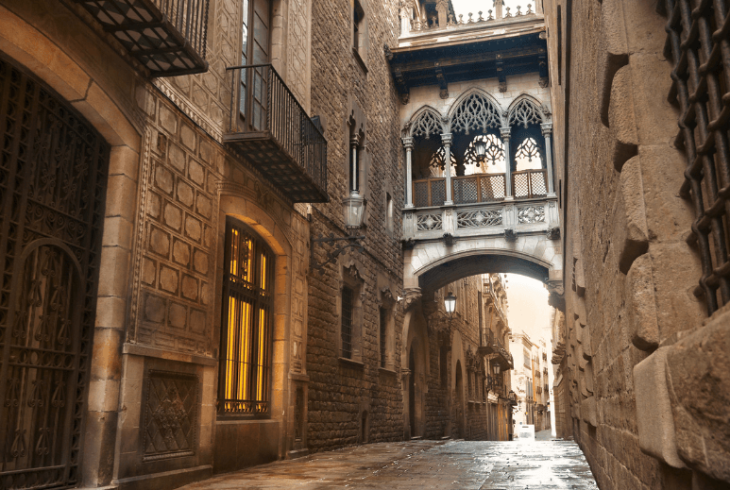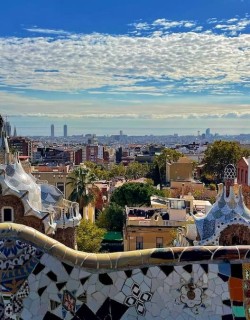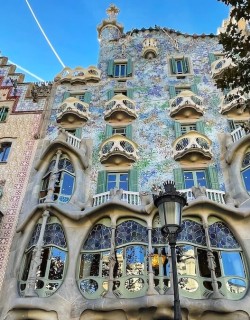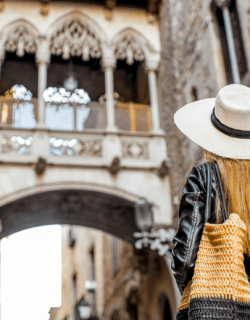The atmospheric Gothic Quarter can lay a strong claim to be Barcelona’s most interesting neighbourhood, and it’s certain that you’ll be spending plenty of time here on any trip to the Catalan capital. This warren of narrow streets and alleys is the oldest part of the city, and conceals many of Barcelona’s most impressive landmarks. From relics of the city’s ancient origins as the Roman city of Barcino to spectacular Gothic monuments and more, read on for our guide to 10 sights in Barcelona’s Gothic quarter that you need to see.
Barcelona Cathedral
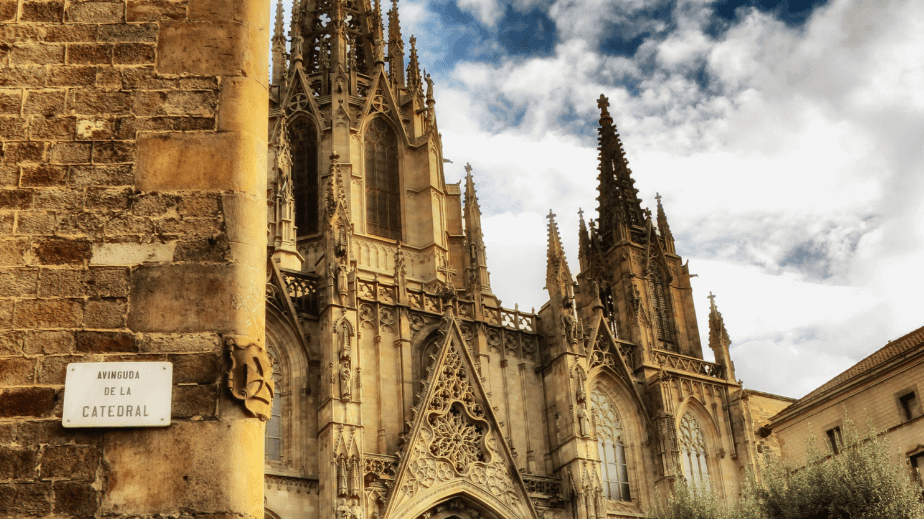 The standout star of Barcelona’s Gothic quarter is the city’s sprawling cathedral. Built between the 13th and 15th centuries from the distinctive stone quarried from Montjuïc mountain to the north of the city, the imposing edifice is officially known as the Cathedral of the Holy Cross and Saint Eulalia, in honour of the city’s patron saint and most precious relics.
The standout star of Barcelona’s Gothic quarter is the city’s sprawling cathedral. Built between the 13th and 15th centuries from the distinctive stone quarried from Montjuïc mountain to the north of the city, the imposing edifice is officially known as the Cathedral of the Holy Cross and Saint Eulalia, in honour of the city’s patron saint and most precious relics.
Although the cathedral is without question the city’s most impressive medieval monument, ironically its iconic facade actually dates from the late 19th century. But don’t hold its relative modernity against it: the stunning design features grimacing gargoyles guarding the cathedral’s deeply recessed entrance portals and mullioned windows in an ensemble that will be sure to fire your imagination.
Its spare, elegant interior is a perfect example of the Catalan Gothic style, with beautiful slender columns supporting the impressive ceiling. Look out for the beautifully sculpted 14th-century wooden choir stalls, and take a peek into the cathedral’s crypt for a glimpse of Eulalia’s alabaster tomb, decorated by Pisan sculptors with images of the saint’s grisly martyrdom. To get the full, top-to-bottom experience of the cathedral, take the lift up to the roof for sweeping views across Barcelona.
Plaça Reial
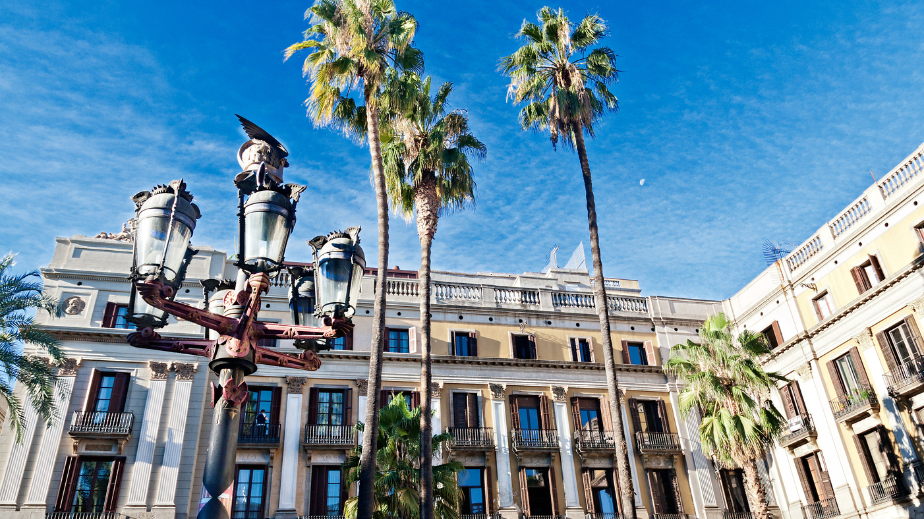
A little slice of Barcelona’s vibrant street life at its best, Plaça Reial (or Royal Square) certainly lives up to its regal billing. The square was created after the demolition of a Capuchin convent in 1835 left a large empty space in the heart of the gothic quarter, and the original design was to provide a suitably sumptuous memorial to reigning King Ferdinand VII. Things didn’t quite pan out, and instead of the intended regal equestrian monument a fountain depicting the three graces was erected in the centre of the square in 1879. Look out for the lampposts that flank the ensemble, designed by a young Antoni Gaudi. Stately mansions line the square, and the patrons spilling out from the cafes and bars sheltered in the square’s porticos make Plaça Reial one of Barcelona’s most buzzing night spots.
El Call Jewish Quarter
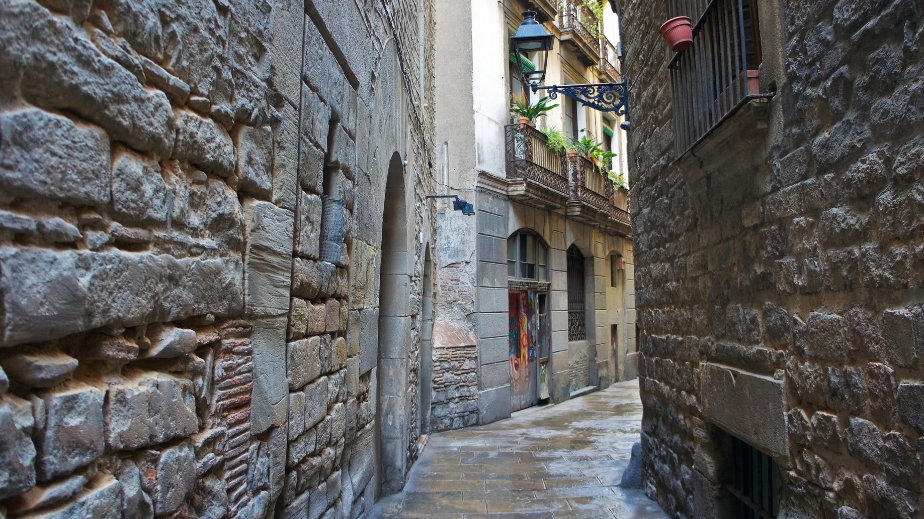
Medieval Barcelona was home to one of Europe’s largest Jewish populations, and the beating heart of the city’s Jewish community was the El Call district located in dense tangle of the Gothic quarter. Sadly, this vibrant and thriving community was badly affected by increasingly anti-semitic popular sentiment and government policies in the 14th century, when a series of brutal pogroms devestated El Call. The horrifying St. Dominic’s Day massacre in 1391 and subsequent actions of the Spanish Inquisition made things worse, culminating in the expulsion of Jews from Spain in 1492. Wandering through atmospheric El Call today is a sobering experience
Museu d'Historia de La Ciutat
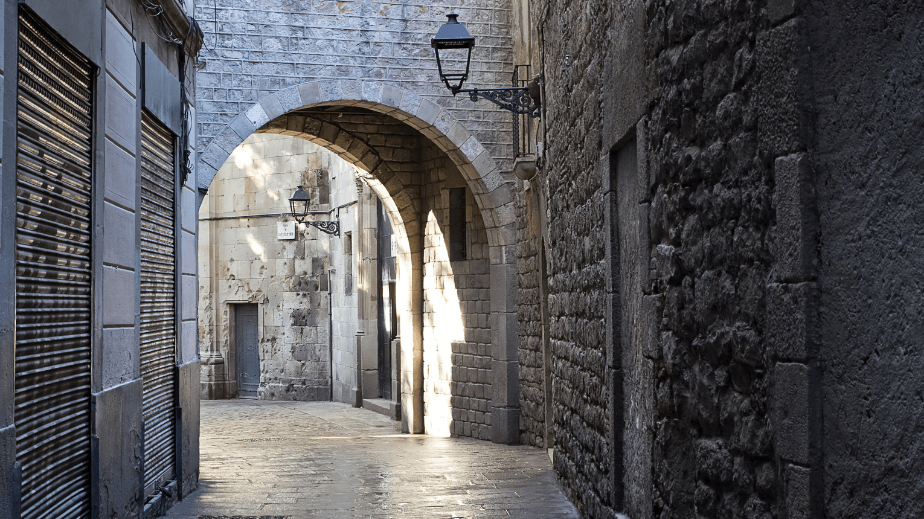
The story of Barcelona extends all the way back to antiquity, when the Romans founded the ancient city of Barcino. This museum located in the heart of the Gothic Quarter tells this history. Housed in the Palau Padellàs, a Gothic palace, a visit to the museum sees you descend into subterranean ancient ruins of a Roman bathhouse, a dye-works, wine cellar and fishmongers. After this trip through ancient Barcino the museum’s route continues into some of the spaces of the former royal palace, including the Sala Tinell (king’s chamber) and the Royal chapel of Santa Agatha.
Plaça Sant Felip Neri
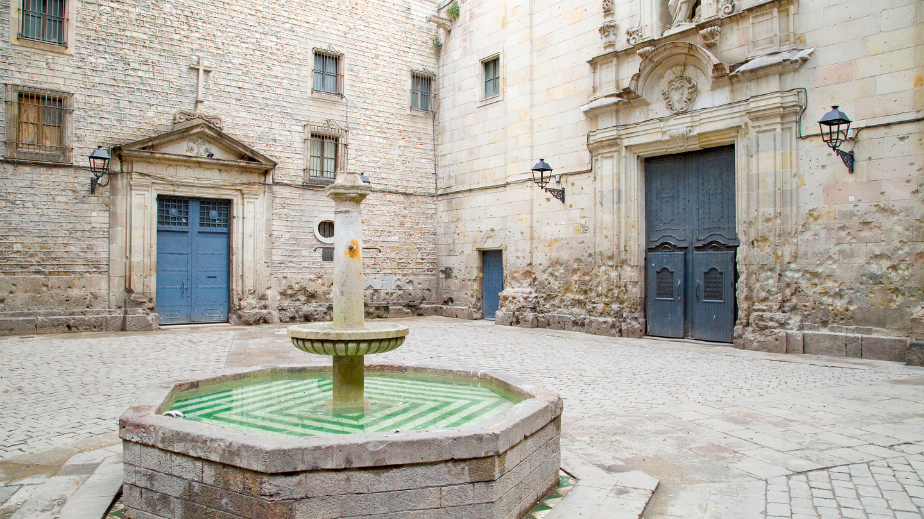
This atmospheric square is one of the most beautiful corners of the Gothic quarter in Barcelona. The square takes its name from Saint Philip Neri, a Counter-Reformation preacher and mystic whose Oratorian order rose to prominence in late 16th century Europe. A Baroque church dedicated to the saint was built over the remains of a medieval graveyard here between 1721 and 1752, whilst an octagonal fountain gurgles gently in the centre of the Plaça in the shade of acacia trees. It’s a peaceful spot, but the square conceals a dark past: during the Spanish Civil War, bombs dropped by General Franco’s fascist troops killed 42 children and refugees sheltering in the the square.
Temple of Augustus

The spectacular temple of Augustus is the most evocative monument to survive from ancient Barcino. Dating from the emperor’s reign in the first century BC, the imposing temple with its beautiful 9-metre high Corinthian columns originally formed part of the city’s Forum, and gradually became incorporated into the dense urban fabric of the medieval city with the passage of the centuries. In the 20th century the Gothic edifice that surrounded the temple was purchased by the Hiking Club of Catalonia, who commissioned the architect Lluís Domènech to design a purpose-built courtyard to showcase the soaring columns. The contrast between the medieval palace, modern courtyard and ancient temple forms a fascinating visual juxtaposition, so make sure to stop by when in Barcelona!
Basilica of Santa Maria del Mar
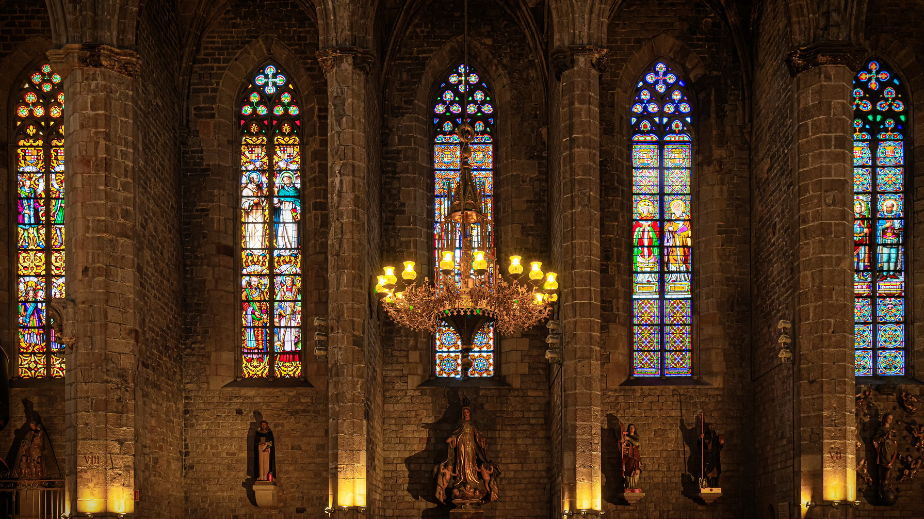
Located in the nearby El Born quarter, the church of Santa Maria del Mar is one of the most impressive Gothic buildings in Barcelona. Constructed during the 1300s, when the Catalan capital was at the height of its influence and prosperity, the basilica boasts a magnificent rib-vaulted ceiling and beautiful slender columns in its light-filled nave. For the prominent art-critic Robert Hughes ‘there is no grander or more solemn architectural space in Spain than Santa Maria del Mar,’ whilst architect Le Corbusier dubbed it the most beautiful church in Barcelona. Despite being nearly razed to the ground during a devastating fire during the spanish Civil War, the magnificent Gothic edifice is still standing and is one of the must-see sights in Barcelona.
Place del Pi
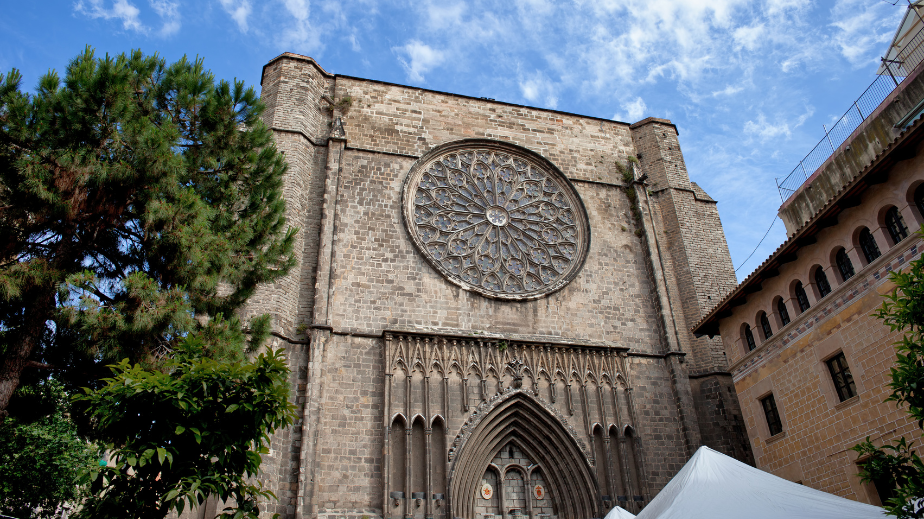
Located just off Las Ramblas, Plaça del Pi is dominated by the Gothic church that gives the square its name, the 14th century Santa Maria del Pi. The church’s 54-metre high bell tower and lovely stained-glass rose window look down benevolently over the Plaça, where regular food markets and arts and crafts fairs keep things lively. Make sure to stop by at the weekend to sample the mouthwatering fare on offer, including local specialty Mato - a soft sheep’s cheese typically served with honey.
Picasso Museum
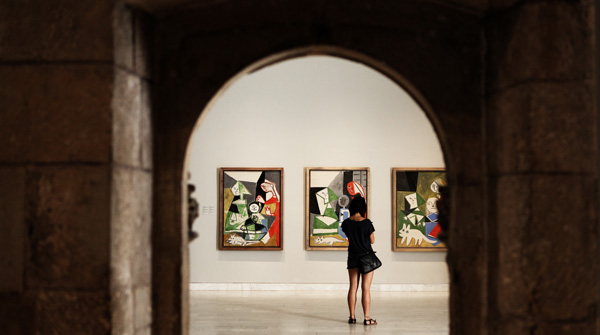
Located just outside the official confines of the Barri Gotic in the El Born quarter, a visit to the Picasso Museum is nonetheless a must when wandering the streets of Barcelona’s old town. Extending over five beautiful medieval palaces, the museum opened in 1963 and was expanded over the years thanks mainly to donations of works by Picasso himself. Although Picasso never set foot in the museum, having abandoned Spain in protest at Franco’s Fascist regime, his contributions to the collection make it an essential visit for anyone interested in the artist’s oeuvre.
Puerta del Bisbe
This stunning bridge spanning the Carrer del Bisbe is one of the most famous sights in Barcelona’s Gothic quarter. Despite appearances however, the elaborately sculpted bridge is actually less than a century old, designed in an eccentric neo-gothic key by Gaudí-follower Joan Rubió i Bellver as part of an ambitious plan to upgrade and revitalise the city’s Gothic quarter in time for the 1929 World’s Fair. Rubió i Bellver wished to flatten the non-gothic aspects of the quarter and replace them with a more homogenous neo-gothic urban fabric, but strong opposition to his plans meant that this elegant arched bridge was the only element to be built. According to legend, the semi-hidden sculpture of a skull run through with a dagger on the underside of the arch was the architect’s frustrated response.
We hope you enjoyed our guide to Barcelona's Gothic Quarter! Through Eternity Tours offer a range of expert-led guided itineraries in the Catalan capital. To see the city at its best, join us on our Barcelona tours!
